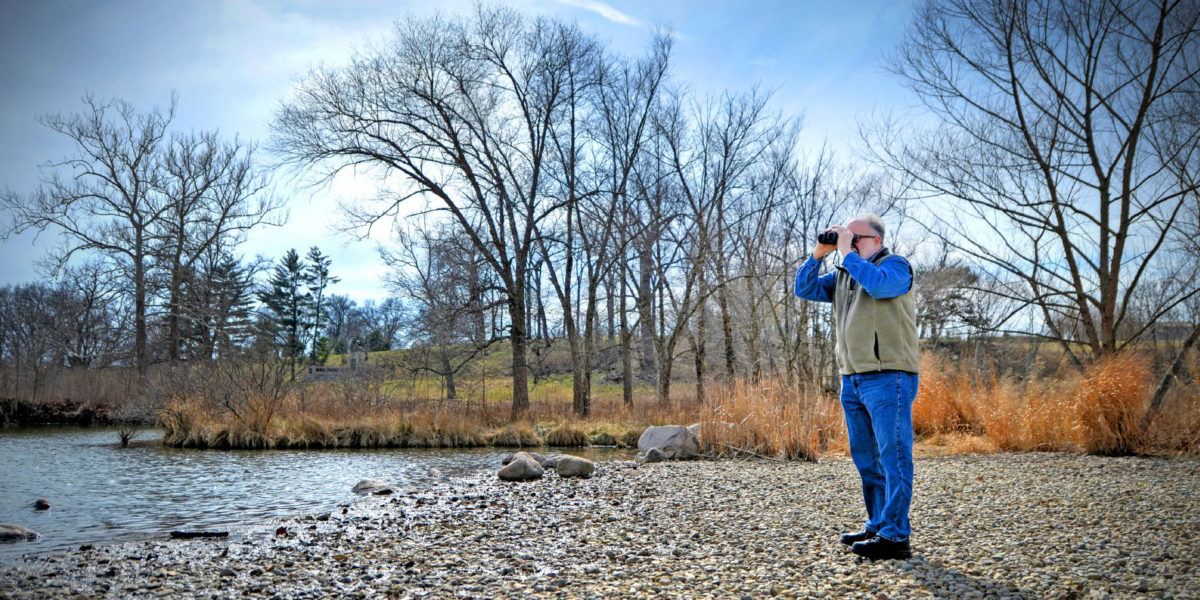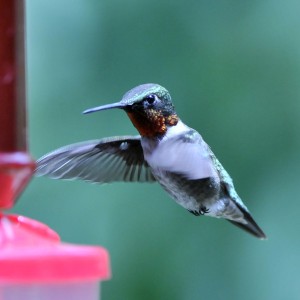“The Danforth Campus of Washington University in St. Louis, as well as the nearby parks, are migrant traps,” said Randy Korotev, a lunar geochemist and, by reputation, one of the university’s most experienced birders. “Songbirds migrate at night and when morning comes, they are hungry and tired. From several thousand feet up, these parks stand out like green islands in a concrete sea.
“The first time I heard the term ‘migrant trap,’ I was a graduate student living in Houston,” Korotev said. “There is a famous spot on the coast called High Island, a salt dome right on the beach where a big plug of salt came up and made a hill. It’s covered with 100-year-old oak trees.
A bouquet of St. Louis visitors, most of whom come and go unnoticed by the city’s preoccupied citizens. (Photos: Randy Korotev)
“Birds that are migrating across the Gulf of Mexico can see the island from a great distance, and they all head for it. I was there in the spring for a couple of years, and it was truly a remarkable thing to see all of these birds literally dropping out of the sky onto this hill,” he said.
“Another famous migrant trap in the Midwest is Point Pelee, a peninsula that sticks out into Lake Erie from Ontario. Birds flying from the United States to Canada funnel in there in the spring,” Korotev said. “And to a some extent, the parks in St. Louis and the Danforth Campus of Washington University are migrant traps as well.”
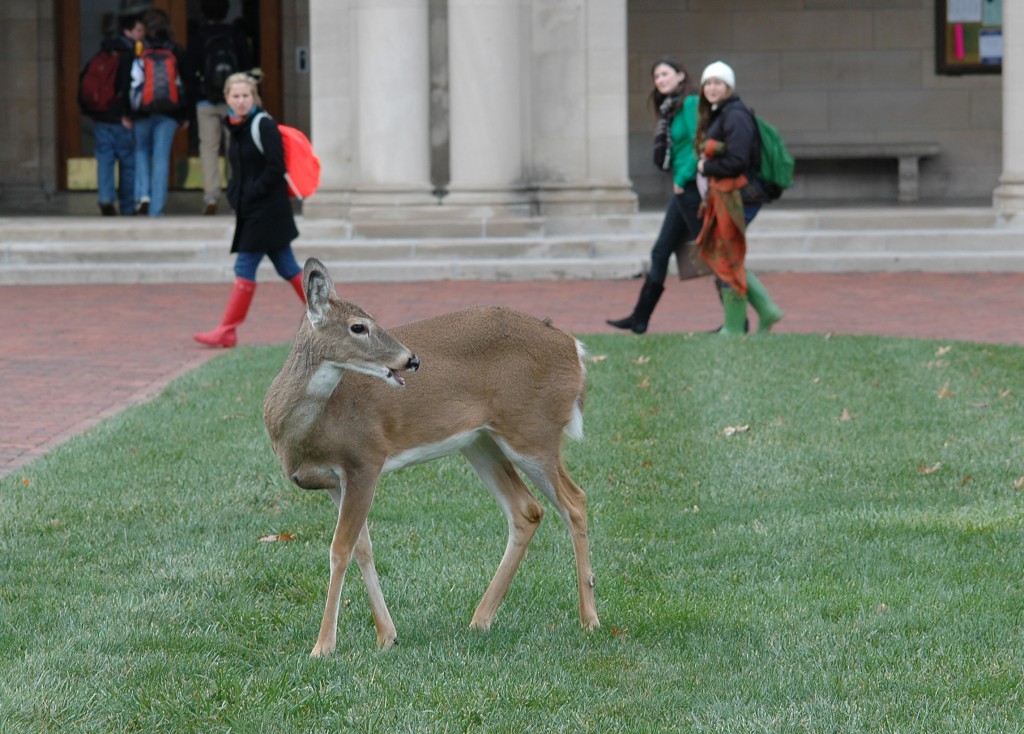
Within each of these traps, birds tend to congregate in certain choice spots. Kennedy Woods in the southwest corner of Forest Park, the site of oak trees that date back to the World’s Fair, attracts migrating warblers that forage on the oak catkins. In Tower Grove Park, the attraction is the fountain in the Gaddy Wild Bird Garden in the northwest corner of the park.
On campus, one of the special spots used to be a big elm, a tree so old and capacious its branches were propped up by two-by-fours. “The birds were just sucked into this tree, schfloooomp. I once walked under its branches in May and counted five species of warblers and a vireo foraging for insects,” Korotev said.
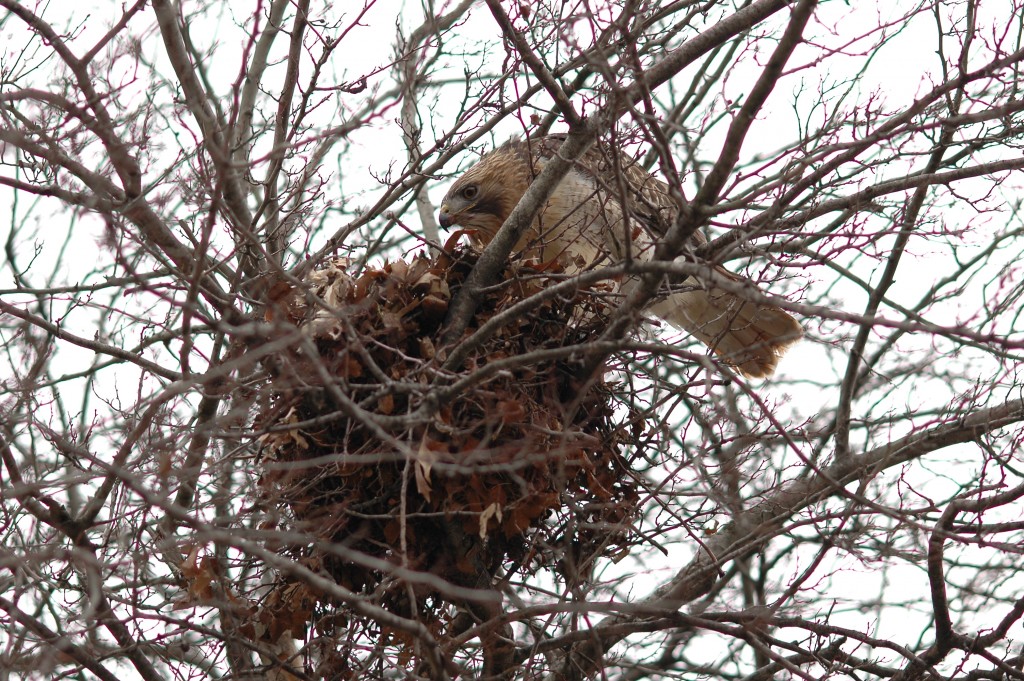
Korotev is one of only a few dozen people on campus who are aware of these unobtrusive visitors. “Early in May last year, I heard a bird calling from a clump of pine trees near Brookings Hall,” he said. “I’d never heard that bird on campus before, but I knew it was a Pine Warbler. A couple of other birds sound very much like a Pine Warbler — such as the Chipping Sparrow and the Dark-eyed Junco — but I was sure.

“The next day, there’s a Pine Warbler calling again from the same trees. I thought, ‘It’s a migrant taking a break from flying.’ And the next day, Friday, it was still there. I actually made a point of driving over here on Saturday to see if that bird was still there, and it was. I didn’t come over Sunday, but by Monday it was gone.”
It only makes sense that migrating birds have layovers to rest and fatten up, Korotev said. They’re burning through calories as they fly, and by the time they hit the Gulf Coast they’re just feathers and bone.
“I’ve also noticed transients in Forest Park that have stayed several days,” he said. “I once saw a Gray-cheeked Thrush, which is a bird of passage in St. Louis, but this one had a white feather in its wing, so I could recognize it. The same thing happened: I saw it in the same spot three or four days in a row, and then it was gone.”
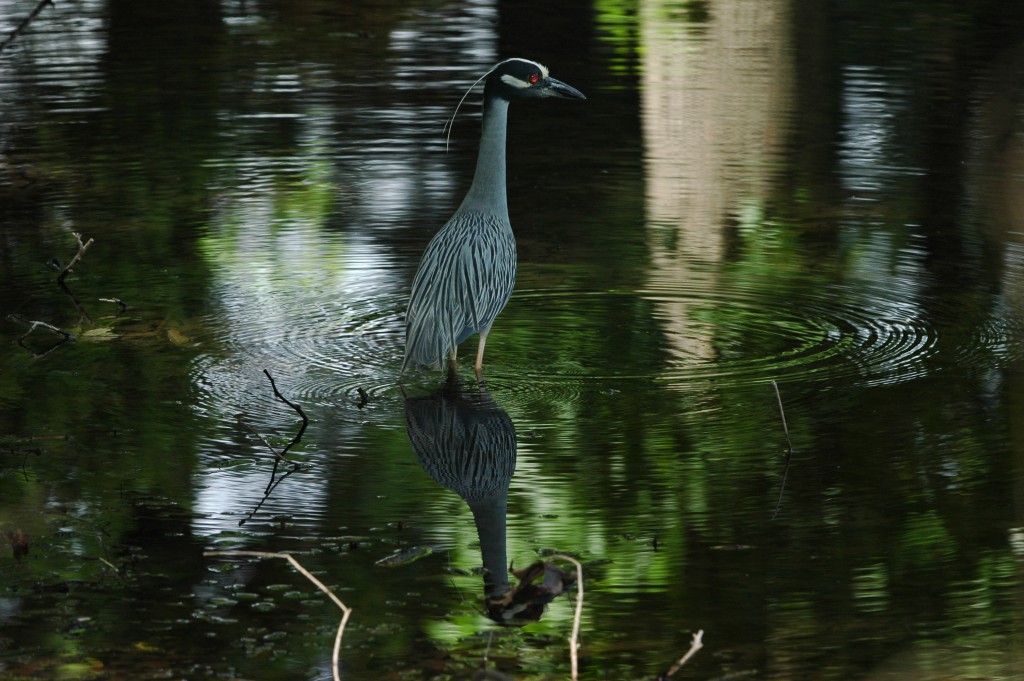
Asked which species are permanent residents in St. Louis, he answers, “That’s complicated. There are birds like Blue Jays that you can find here all year-round, but I’m pretty sure the birds we see in winter are not the same birds that were here in summer. The whole population moves south in winter.
“Mockingbirds, as well. The winter birds are not the same individuals as the summer birds. Early this week, I saw a Mockingbird on campus and thought, ‘Well, here’s our winter Mockingbird.’ This happens every winter. I don’t necessarily see them on campus in summer, but for some reason they like the campus in winter.”
Some birds, though, do stick around: Downy Woodpeckers, Carolina Chickadees, Tufted Titmice, Northern Cardinals — and a pair of Belted Kingfishers over in Forest Park.
Korotev often mentions hearing, rather than seeing, the birds he encounters. That Pine Warbler near Brookings?
“I walked around the tree,” he said, “but I never saw the bird.”
So how do Korotev and other birders usually identify birds, which are often just dark silhouettes against a bright sky, if they’re visible at all?
“A birder will come home and say, ‘Well, I spotted 92 birds today,’ ” Korotev said, “but what he or she really means is ‘I saw 12 and heard 80.’ I’d say roughly 80 or 90 percent of migrant songbirds are identified by call.”
For most of us, for whom tuning into the layer of the soundscape where the birds are calling requires deliberate effort, the notion of identifying hundreds of different bird calls seems like wizardry.
When Korotev said the Pine Warbler, the Chipping Sparrow and the Dark-eyed Junco sound alike, he is not exaggerating, as the recordings of these birds at the Cornell Lab of Ornithology website makes clear.
What about birds that mimic other birds? Can birders distinguish among them?
“I can almost always recognize a Northern Mockingbird because they go through a litany of different bird calls,” Korotev said. “I once heard a European Starling (a cousin of the mynas) here on campus do a remarkable Killdeer call. And Blue Jays do a remarkable imitation of a Red-shouldered Hawk. I can usually recognize them as well because they will intersperse the copies with their usual calls.
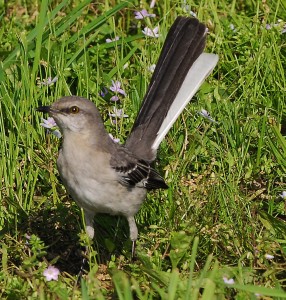
“You just kind of get good at it,” he said. “The eighth time you hear a call, you look up and say, ‘Oh, that’s one of those Great Crested Flycatchers.’ Oh, OK, I’ve got that one down.’ ”
When the writer protests that she has tried and failed to learn bird calls, he admits some people can do it and some can’t, and people with musical training are often better at it, Korotev said. Among his birding acquaintances, the one with the best ear is a musician.
In fact, it was the uncanny ability of birders to identify species by call alone that got Korotev hooked on birding. In the 1970s, he was a student of Larry Haskin at the University of Wisconsin-Madison. (Haskin later became chief scientist at the Johnson Space Center and then chair of the Department of Earth and Planetary Sciences in Arts & Sciences at Washington University.)
“At the time, Haskin had a piece of farmland west of Madison,” Korotev said, “and he asked me to help him load a piece of equipment he had bought at a farm auction. We did that, and we’re sitting there eating lunch and he looked up and says, ‘Ah, there’s a Red-tailed Hawk.’ And my reaction was, ‘I can’t even hardly see that bird; how does he know what color tail it has?’ ”
“About that time I started thinking, ‘Well, a learned person ought to know the birds that are around him.’ ”
-Randy Korotev
The next spring, events conspired to push him into what became a lifetime pursuit. After years of the claustrophobic student life, he was missing walks in the woods, which had been part of his childhood in a family of outdoorsmen.
He got up early one morning, got on his bike and rode over to the arboretum in Madison, 1,200 acres of fields and pastures that the university had converted back to prairies and forests. He became totally absorbed in searching for birds, he said, only realizing that it was late in the afternoon when he got hungry.
He has run Christmas Bird Counts in the St. Louis area (at Orchard Farm in St. Charles County and the Missouri Confluence) for the past 30 years. The Christmas Bird Count is the organized census of birds held every winter by the National Audubon Society, first proposed by ornithologist Frank Chapman in 1900 to replace Christmas “side hunts” in which people competed to kill as many birds as possible.
There are four or five counts in the St. Louis area and 27 counts in Missouri. It’s the biggest citizen science project in the country. Each year, Korotev tries to go to the count in Calhoun County, Ill., and the one at the Busch and Weldon Springs Conservation Areas, as well his own, which is held Jan. 1, at the Confluence. This year, the count at the Confluence had to be canceled because the main road was under three feet of water, Korotev said.
Korotev also compiles the lists for all the Missouri Bird Counts, which means, he said, “I go through everybody’s list and say, ‘You don’t really mean you saw a Flamingo, do you?’ ”
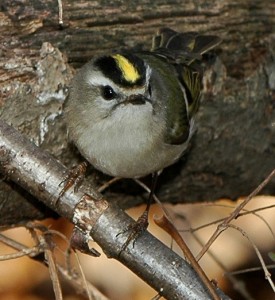
He has also set up his own miniature migrant trip in his St. Louis backyard. “When my wife and I first toured the house in 1982, I looked out the front window and saw a little Golden-crowned Kinglet sitting on the branch of an oak tree. So I said, ‘This is the one,’ and we made an offer.
“I put in a pond in the backyard a few years ago,” he said. “This past summer was so dry, I had the only wet spot. Build it and they will come; I must have seen 15 species of warbler since last August.”
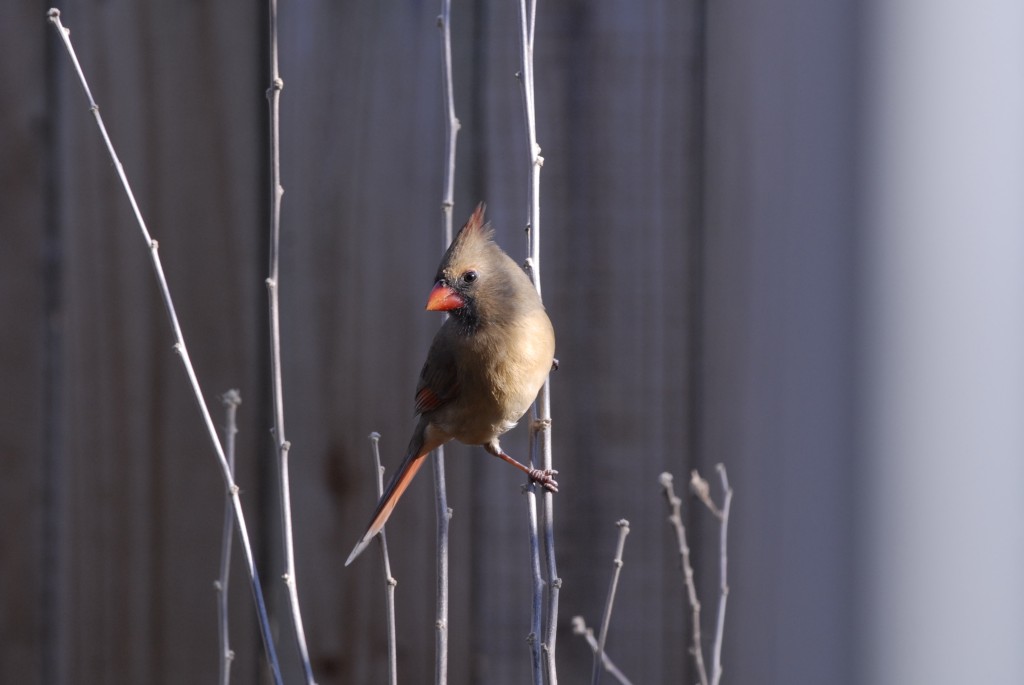
He estimates his yardlist is up to 135 species. And the pond has another benefit as well; birds attracted by the water alight on the edge of the pond just long enough for him to take the stunning photos that illustrate this article.
